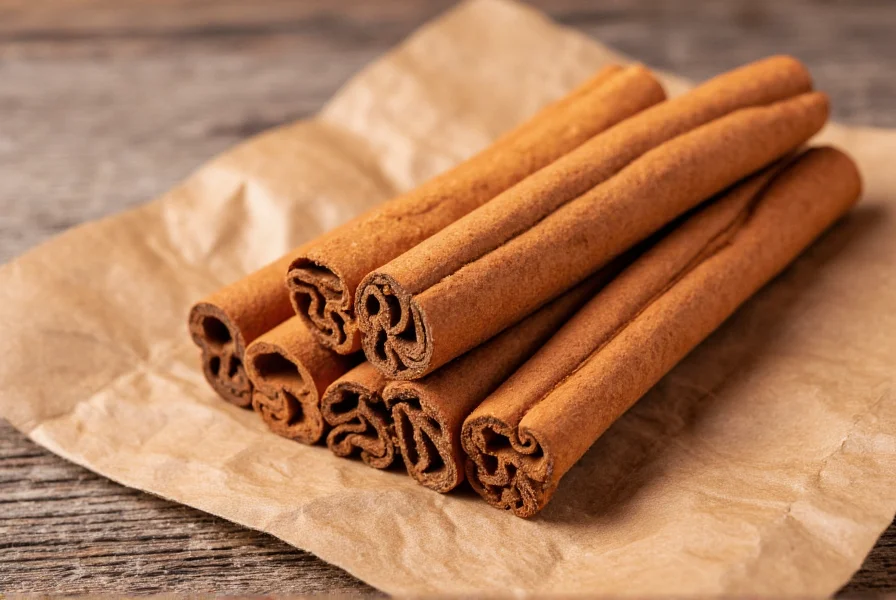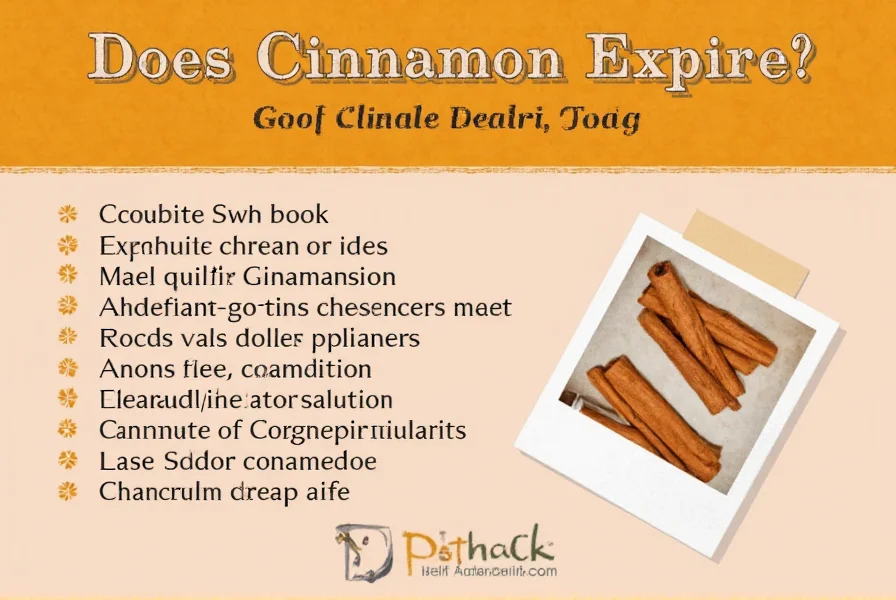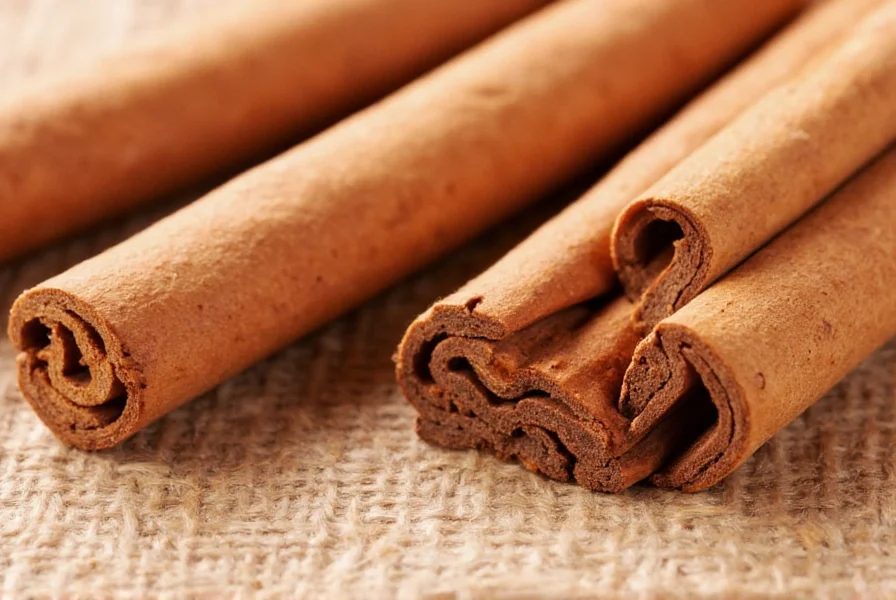Understanding spice longevity helps you maximize both flavor and value in your kitchen. Unlike perishable foods that become unsafe after expiration, dried spices like cinnamon undergo a slow degradation process rather than a sudden expiration. This natural decline affects your culinary results more than your health.

Understanding Cinnamon Shelf Life
Cinnamon's shelf life depends primarily on its form and storage conditions. While not a food safety concern, diminished potency means you'll need to use more to achieve the same flavor impact, ultimately wasting product. Properly stored cinnamon remains safe indefinitely but delivers optimal flavor within specific timeframes.
| Cinnamon Type | Best Quality Period | Maximum Usable Period | Flavor Retention |
|---|---|---|---|
| Ground Cinnamon | 1-2 years | 2-3 years | 60-70% after 1 year |
| Cinnamon Sticks (Quills) | 3-4 years | 4-5 years | 80-90% after 2 years |
| Opened Container | 6-12 months | 1-2 years | 40-50% after 1 year |
| Unopened Commercial | 2-4 years | 5+ years | 90%+ if stored properly |
How to Tell If Your Cinnamon Has Degraded
Unlike spoiled food that shows obvious signs of deterioration, cinnamon's decline is more subtle. Check these indicators to assess your spice's current quality:
- Aroma test: Fresh cinnamon has a strong, sweet, woody scent. Rub a small amount between your palms—if you can barely detect the characteristic fragrance, potency has significantly decreased
- Color examination: Vibrant reddish-brown color fades to a dull, darker brown as cinnamon ages
- Taste test: Safe to sample a tiny amount—fresh cinnamon delivers immediate warmth and sweetness, while degraded product tastes flat and one-dimensional
- Solubility check: When added to hot liquid, fresh ground cinnamon disperses evenly, while old product may clump
Optimal Cinnamon Storage Practices
Proper storage dramatically extends cinnamon's useful life. Follow these evidence-based recommendations to maintain maximum potency:
Store cinnamon in an airtight container away from light, heat, and moisture—the three primary factors that accelerate flavor loss. Glass jars with tight-sealing lids outperform plastic containers for long-term storage. The ideal location is a cool, dark pantry cabinet, not above your stove or near other heat sources.
For extended storage, consider dividing your supply into smaller portions. Each time you open the main container, moisture and oxygen enter, accelerating degradation. Keep a small everyday container in your spice rack and store the remainder in a cool, dark place.

Using Cinnamon Past Its Prime
While degraded cinnamon remains safe to consume, its diminished potency affects your culinary results. When using older cinnamon:
- Increase quantities by 25-50% to compensate for flavor loss
- Toast ground cinnamon briefly in a dry pan to release remaining volatile compounds
- Grind whole sticks fresh for immediate use rather than relying on pre-ground product
- Combine with complementary spices like nutmeg or allspice to enhance perceived flavor
Discard cinnamon showing signs of moisture, mold, or insect activity—these indicate improper storage rather than natural degradation. Properly stored dry cinnamon rarely develops these issues.
Maximizing Flavor in Your Dishes
Understanding how long cinnamon lasts after opening helps you plan your cooking for optimal results. For critical recipes where cinnamon is a featured flavor, use your freshest supply. In dishes with multiple strong spices, slightly older cinnamon may still perform adequately.
When baking, add ground cinnamon later in the mixing process to preserve volatile compounds. For beverages like chai or mulled wine, add cinnamon sticks early to allow sufficient time for flavor extraction. These small adjustments make a noticeable difference in final flavor profiles.
Frequently Asked Questions
Can you get sick from using old cinnamon?
No, properly stored dried cinnamon doesn't become unsafe to consume as it ages. The primary concern is diminished flavor rather than food safety. Cinnamon lacks the moisture content needed for bacterial growth. Discard only if you notice signs of moisture, mold, or insect contamination, which indicate improper storage conditions rather than natural expiration.
How can you extend cinnamon's shelf life beyond typical recommendations?
To maximize cinnamon shelf life after opening, store it in an airtight glass container in a cool, dark place away from heat sources. Divide large quantities into smaller portions to minimize air exposure. For extremely long-term storage (beyond 2 years for ground, 4 years for sticks), consider vacuum-sealing with oxygen absorbers and storing in the freezer, which dramatically slows flavor degradation while maintaining safety.
Does cinnamon lose its health benefits over time?
Yes, many of cinnamon's beneficial compounds, particularly cinnamaldehyde and polyphenols, degrade over time along with flavor compounds. While older cinnamon still contains some beneficial properties, its antioxidant capacity diminishes significantly after the first year. For maximum health benefits, use cinnamon within 12-18 months of opening and store it properly to preserve these compounds as long as possible.
Why do cinnamon sticks last longer than ground cinnamon?
Cinnamon sticks maintain freshness longer because their essential oils and flavor compounds are protected within the whole bark structure. Grinding exposes more surface area to air, light, and moisture, accelerating oxidation and evaporation of volatile compounds. This explains why how long does ground cinnamon last is significantly shorter than whole cinnamon quills—typically half the timeframe for comparable quality.











 浙公网安备
33010002000092号
浙公网安备
33010002000092号 浙B2-20120091-4
浙B2-20120091-4